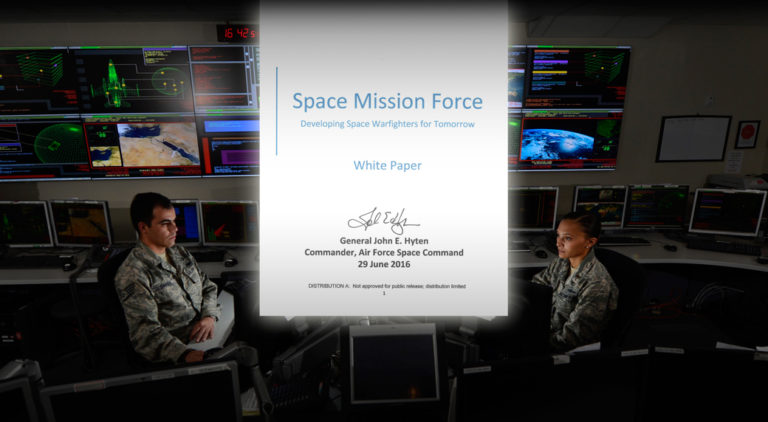US Air Force Expands Space Warfare Training

WASHINGTON — U.S. Air Force Space Command released an outline late last week of Gen. John Hyten's plan for training military satellite operators to defend the ultimate high ground against adversaries striving to take away the edge satellites give the U.S. and its allies in armed conflict.
The initiative, known as the Space Mission Force, aims to better prepare airmen to operate military satellites in a threatened environment and includes tactics to respond to threats. Air Force space leaders have been planning the program for more than a year and Hyten, the head of Air Force Space Command, has made the Space Mission Force a prominent part of his speeches in the last eight months.
"The training and skills that sustained our space operations for the last several decades are not the same skills we need to fight through threats and win in today's contested, degraded and operationally‐limited environment," Hyten wrote in "Space Mission Force: Developing Space Warfighters for Tomorrow." The eight-page white paper, dated June 29, was publicly released July 15. [The Most Destructive Space Weapons Concepts Ever]
Hyten's plan aims to ensure the Air Force applies the same level of rigor to its space operations as it does to its air operations. Air Force officials say the program is crucial as space takes a greater role in the Defense Department's day-to-day operations.
While previously the Air Force used a small number space aggressor squadrons to train for potential battles in space, the new Space Mission Force ensures a much greater number of operators know how to act in what the Air Force describes as a "contested environment."
Perhaps most notably, the plan calls for operators to receive intensive training for four to six months, and then spend the next four to six months putting their newly learned skills to the test by having experienced and rookie operators working side-by-side.
"Our space forces must demonstrate their ability to react to a thinking adversary and operate as warfighters in this environment," Hyten said in the document. "If we do not adopt this transformation quickly, we will lose our competitive advantage in space and jeopardize our ability to successfully confront adversaries in all domains."
Get the Space.com Newsletter
Breaking space news, the latest updates on rocket launches, skywatching events and more!
While much of the paper describes broad philosophies rather than operational specifics, the document said the Air Force hopes "to challenge current practices and re‐evaluate all existing processes to drive development" and find new solutions.
In February, staffers from the 50th Space Wing, which manages various Air Force satellites, including the GPS constellation, began its first rotation of training. The 21st Space Wing, which runs the Air Force's space situational awareness ground stations and radars, began its first rotation July 1. The 460th Space Wing, which manages the Air Force's missile warning satellites, will begin its transition to the Space Mission Force next year.
The Space Mission Force "really focused on training our space operators to a level that they can respond to those growing threats that we see," Lt. Gen. Jay Raymond, the Air Force's deputy chief of staff for operations, said during a speech here July 14. "The Space Mission Force contract will normalize the way the Air Force trains and prevents space wars."
This story was provided by SpaceNews, dedicated to covering all aspects of the space industry.
Join our Space Forums to keep talking space on the latest missions, night sky and more! And if you have a news tip, correction or comment, let us know at: community@space.com.
Mike Gruss is a veteran defense reporter and Editor-in-Chief of Sightline Media Group, which includes Army Times, Air Force Times, Dense News, Military Times and Navy Times. From 2013 to 2016, Mike served as a Senior Staff Writer for SpaceNews covering national security space programs and military space policy in the U.S. Congress. Mike earned a bachelor's degree in English and American Studies from Miami University and has previously wrote for the Journal Gazette in Fort Wayne, Indiana and the Virginian-Pilot in Virginia before joining SpaceNews. Prior to joining Sightline in 2017, he was a senior editor of FedTech magazine covering technology in federal government. You can see Mike's latest project on Twitter.










